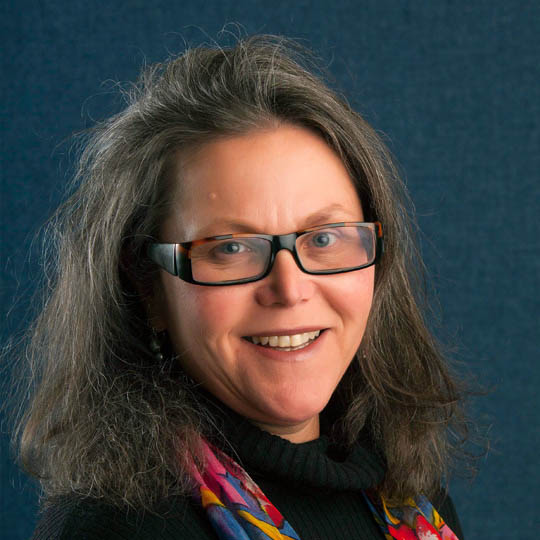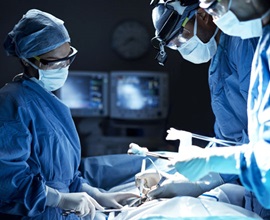Heart Surgery at St. Luke's through a Layman's Eyes
Mike Simplot is no stranger to the inside of a hospital room, or even an operating room.
But being the recipient of medical care is not the same as witnessing the delivery of medical care. And for Mike Simplot, having the chance to sit in on open heart surgery at St. Luke’s was an experience so meaningful he’s nearly speechless when he tries to describe it.
Simplot, who serves as president of the S-Sixteen real estate company and is a former St. Luke’s Children’s Advisory Board member and chairman, had the opportunity to observe the surgery as part of St. Luke’s Health Foundation’s ongoing work to give community members an inside look at how health care works.
Simplot’s family has long been connected with St. Luke’s, and Mike Simplot has been active with the System for the past two decades.
“I got involved with St. Luke’s because it was the main hospital that babies were born at, and babies should have a chance,” he said.
And as he good-naturedly acknowledges, he has been a patient repeatedly for care of multiple accidents, weekend warrior episodes, and Mr. Fix-it mishaps.
What he was most interested in, especially as the owner of a complicated business, was the orchestration of a very complicated procedure among more than a dozen highly skilled professionals, each with a complicated set of tasks and responsibilities.
“I’ve been on the surgery table, I think I’m up to 12 times,” he said. “I’ve had rotator cuffs, I’ve had knees, back …”
He’s also no doctor, not even close.
“I hated biology. I couldn’t stand trying to learn body parts,” Simplot said. “I thought it would be great to see, from the other side of the table, how do we put people back together?
“I wanted to see how they do it, how they put you back together. To me, it was, how do these people all function?”
Going into the experience, Simplot knew nothing about the procedure, the preparation, or the personnel. And more than one potential companion had backed out. No one, it seemed, was as interested in viewing the operation as Mike Simplot was. So this past fall, he went to observe the surgery alone.
He met with the surgeon, Dr. Scott Huerd, in advance and was shown pictures of what might be expected. He learned that the patient, who’d given permission for Simplot’s presence in the OR in advance, was a relatively fit Idaho man whose aortic valve was not functioning and needed replacing.
He donned scrubs, a mask, and a hair-covering cap. Because the OR environment can be chilly, he wore a long-sleeve shirt under a scrub jacket. He entered the OR behind Dr. Huerd, was introduced to the team, listened in as they went over the checklist, and took up a position on a footstool at the head of the patient.
Surgery was about four hours. He stood there the whole time. And he’s been trying to share the experience, with as many people as will listen, ever since.
“It was that interesting. You’ve got a person who, their quality of life is not going to be anything because they have this problem, and now you have a group of individuals who, working as a team, is giving him a new lease on life,” he said. “It’s totally fascinating. They’re working on the human body. Where do they learn to do this? There’s years of study that went into this.”
The experience was nothing like representations in media that he’d seen.
“The precision with which they worked, there were checks and double-checks … It’s nothing like you see on TV,” Simplot said. “It was such a controlled environment. Everyone knew their role, everyone did their role.
“They had boards, they were counting sponges, it was just … In business, I can make decisions and do things. But if there’s a minor mistake made, there’s no real consequence that’s someone living or dying. There, it’s got to be perfect the first time.”
Simplot was struck by the atmosphere in which the team members worked, smoothly, efficiently, with no wasted time or effort.
“They were enjoying their job, but they were all concentrating on what they were doing,” he said. “They were trying to make someone’s life much better for him. It was fascinating, A-plus-plus care and how they treated him. Everything was done with such precision.
“What I came away with is that what we hear or read about in the media gets us all fired up about a lot of stuff, but when it comes to the human life, and you get to see these professionals do something to lengthen that, you do understand why there’s all that education, and why we keep the hospitals so clean, and why we have a lot of costs.
“When you see it firsthand and you see the care that everybody took in making sure this patient got the best care, it all makes sense.”
For Simplot, the experience reaffirmed “how sophisticated we really are.
“I never imagined that we could fix the human body like that.”
Simplot’s voice is full of awe, months later, as he describes seeing the man’s organs and hearing the rhythmic sound of the new metal valve, a sound the patient has now gotten accustomed to.
And all those people who declined his invitation to share the experience?
“Now that I’ve done it, everybody’s got questions.”
For more information about experiences such as Mike Simplot’s, call St. Luke’s Health Foundation at (208) 381-2123.
About The Author

Roya Camp works in the St. Luke’s Communications department.

